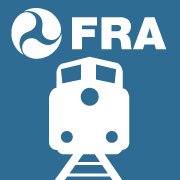

These revisions contemporize Brake System Safety requirements by incorporating safer, newer technologies, reduce unnecessary costs and increase consistency between U.S. and Canadian regulations.
“Incorporating technologies and safety practices, this final rule improves freight rail efficiency and will make our freight rail system competitive for the future,” said FRA Administrator Ronald L. Batory. “Issuing waivers permitting railroads to test these practices gave us an opportunity to verify the safety benefits. Modernization no longer has to happen by waiver; it’s permanent, and the economic impact to freight rail couldn’t come at a more pressing time.”
Canada has allowed trains to be off air for 24 hours since 2008, and Canada’s operational safety data supports FRA’s action. FRA’s final rule permits trains to be off air for as long as 24 hours, bringing the U.S. in line with our neighbors to the north.
The regulatory cost savings is estimated to be over $500 million over the next decade, adding to the over $93 billion in regulatory savings accomplished under the leadership of Secretary Elaine L. Chao and the current administration at the U.S. Department of Transportation.
With this change, FRA estimates the industry will perform 110,000 fewer Class I brake inspections annually. The change reduces the cost and time needed for inspections while permitting more flexibility to turn off locomotives, which is expected to result in fewer locomotives idling in rail yards. FRA will continue to require a Class III brake inspection when adding freight cars to trains.
The final rule incorporates new technology to test brakes on each freight car, permitting two types of automated tests for individual freight cars. “In the more than four years since FRA began issuing waivers for this procedure, we’ve seen it used on more than 800,000 rail cars and have observed remarkable safety improvements,” Batory added.
Cars tested with an automated single car test device showed an 18% reduction in repeat freight car brake failures. Cars tested with the four pressure method showed a 58% reduction in repeat freight car brake failures. These demonstrated improvements permit FRA to increase the testing intervals for freight cars from one year to 24- or 48-month intervals, depending on the automated test method a railroad uses.
FRA is also changing the required height for end-of-train (EOT) marking device displays, reducing it from 48 inches to 40 inches above the top of the rail. This change will permit the manufacture and use of smaller and lighter EOT devices, making them easier and safer for rail workers to carry.
“Issuing test waivers allows our teams to set conditions for railroads to try new technologies,” Batory said. “We only approve waiver requests when we’re certain the changes maintain or improve safety. We’re confident that the changes outlined in this final rule will meet or exceed current safety standards while saving the industry money.”
This final rule addresses several technical issues. To learn more, click here to read the final rule on FRA’s website.
Related News
- Operation Lifesaver campaigns to promote rail safety in 11 states
- New TD Crew Room Flyers Available
- Colorado bill criminalizing transit assault one step closer to becoming law
- Honoring the Legacy of Brother John A. Saunders
- Colorado Transit Worker Safety Bill (House Bill 25-1290)
- Kansas funds passenger rail expansion
- Maryland Passes Monumental Transit Safety Bill
- Brother Wirth Crowned Champion in 168-Pound Masters Division Victory
- Chairman Pauli Announces Retirement, SMART-TD celebrates his career
- New Mexico Local 1687 sets new precedent with Red Apple Transit